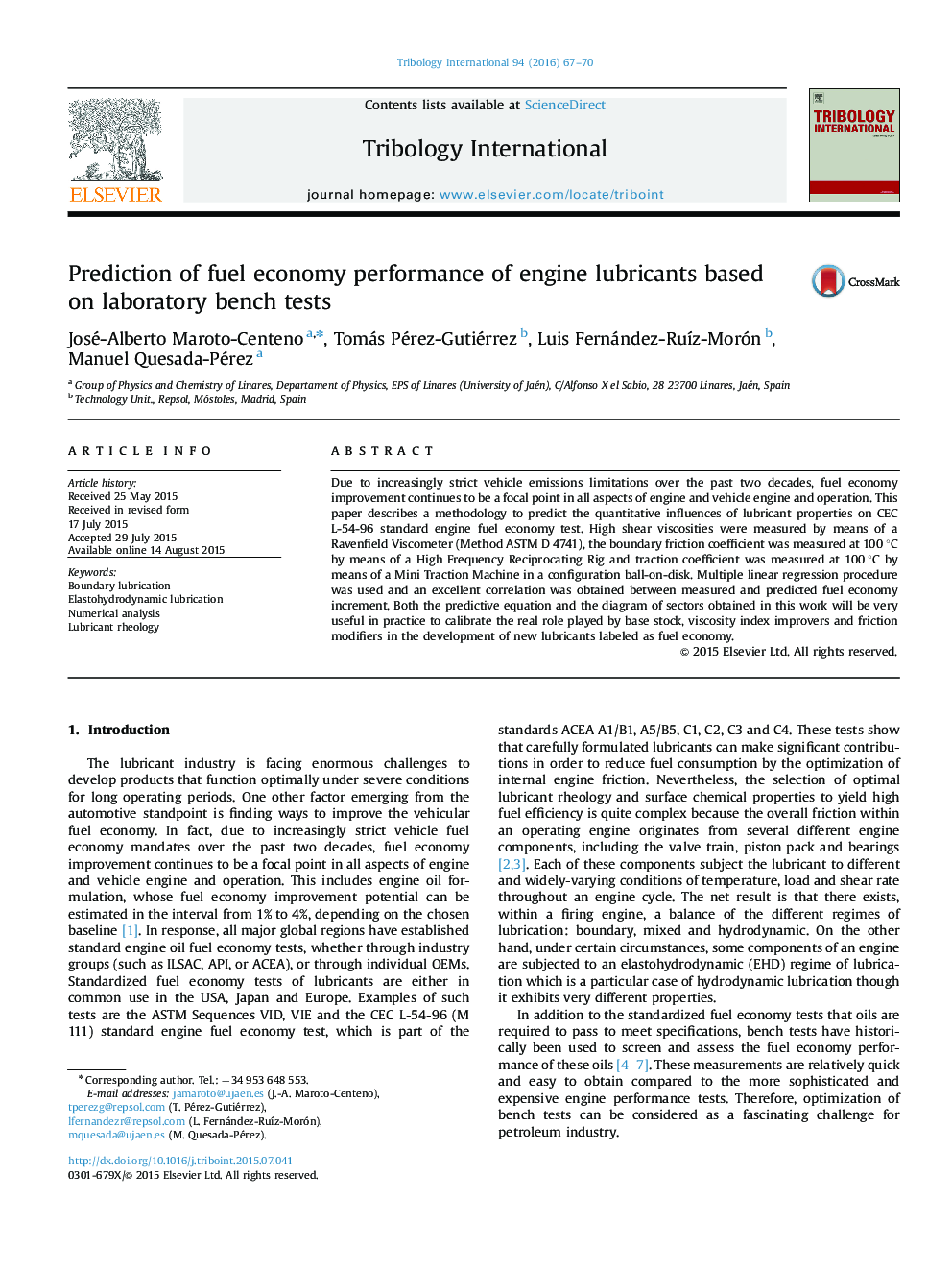| Article ID | Journal | Published Year | Pages | File Type |
|---|---|---|---|---|
| 7002724 | Tribology International | 2016 | 4 Pages |
Abstract
Due to increasingly strict vehicle emissions limitations over the past two decades, fuel economy improvement continues to be a focal point in all aspects of engine and vehicle engine and operation. This paper describes a methodology to predict the quantitative influences of lubricant properties on CEC L-54-96 standard engine fuel economy test. High shear viscosities were measured by means of a Ravenfield Viscometer (Method ASTM D 4741), the boundary friction coefficient was measured at 100 °C by means of a High Frequency Reciprocating Rig and traction coefficient was measured at 100 °C by means of a Mini Traction Machine in a configuration ball-on-disk. Multiple linear regression procedure was used and an excellent correlation was obtained between measured and predicted fuel economy increment. Both the predictive equation and the diagram of sectors obtained in this work will be very useful in practice to calibrate the real role played by base stock, viscosity index improvers and friction modifiers in the development of new lubricants labeled as fuel economy.
Related Topics
Physical Sciences and Engineering
Chemical Engineering
Colloid and Surface Chemistry
Authors
José-Alberto Maroto-Centeno, Tomás Pérez-Gutiérrez, Luis Fernández-RuÃz-Morón, Manuel Quesada-Pérez,
